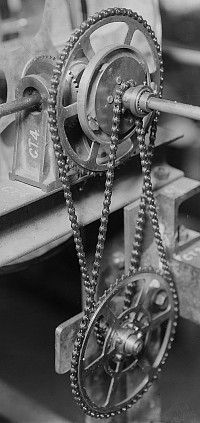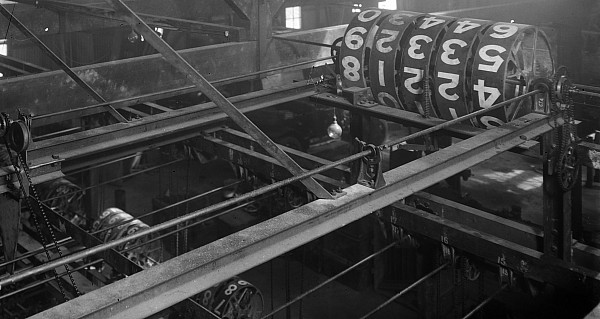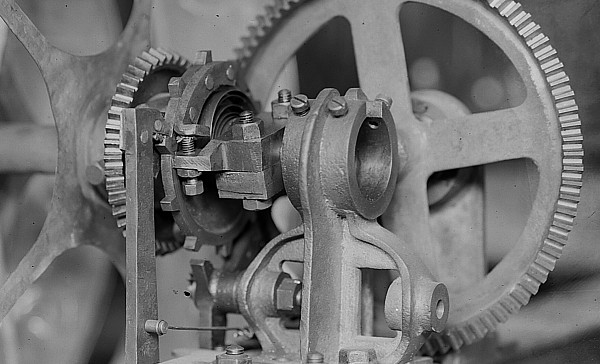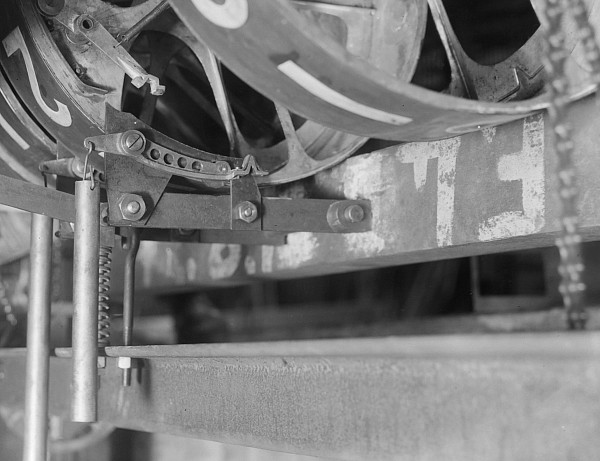Computer Science
First Automatic Totalisator: What we know about counters
Here we will detail what little we know about the counters of the 1913 machine. We actually have a nice photo of the Grand Total counter from the back:

On the left upper is the last stage of the Grand Total adder driving the shaft that leads to the "data input" on the left of the counter - you can just see the wheel that drives the counter. In the lower left is the "auxilliary power" shaft that leads to the right of the counter and provides extra impetus to move the 10s, 100s etc. wheels of the counter.
We also have a close-up the power input that shows that it is highly geared. It seems as though one rotation of the power input shaft will result in many rotations of the small cog on the upper shaft that presumably passes rotational impetus on a sleeve rotating on that shaft. This might ensure that the weight that drives the power doesn't drop too quickly?
Neither of these photos help in understanding how the counter actually works. But we do have a close up of the "data input" end that does provide some clues:
This gives a good view of the toothed wheel at the end of the input shaft which drives the units wheel of the counter directly - note that it is geared 2:1 so that one turn of the shaft causes the units wheel to rotate twice, as expected. The 1915 patent describes the improved counters in detail which can help our understanding. However, by then it was decided to fix the units wheel of the grand total at zero and not rotate it at all because it moved too fast to be of any use - the units value was maintained on a separate light-weight wheel attached to the input shaft and the units digit set manually when betting was completed.
In the 1915 patent the horse adder units wheels were still driven directly from the input shaft like here. Similarly, the units wheel did not propagate a carry but the 10s wheel was turned directly. The same must be true here, at least with the grand total. You can see a wheel with 10 teeth and some kind of escapement - presumably each full turn of the units wheel released the escapement once and provided a single step input to the 10s wheel, by some mechanism that we can only guess at. Note also that there seems to be a coiled spring inside the toothed wheel that probably acted as a "buffer" to allow the input to be received faster than the 10s wheel was capable of responding. (A current newspaper report states that all of the counters had an input buffer spring and a governor to stop them rotating too quickly, but we have no details.)
With the horse counters we have even less information. We can see that they have input wheels similar to that of the Grand Total counter and that they seem to each have an auxilliary power input but no further details can be discerned. There is one photo, below, of the workings between two wheels of a horse counter, but what it does, why it was singled-out to be photographed, we have no idea. (Having an easy way to set the counters to zero for the next race was also an important feature - perhaps it is to do with this? Or it could be to do with the carry mechanism.)






